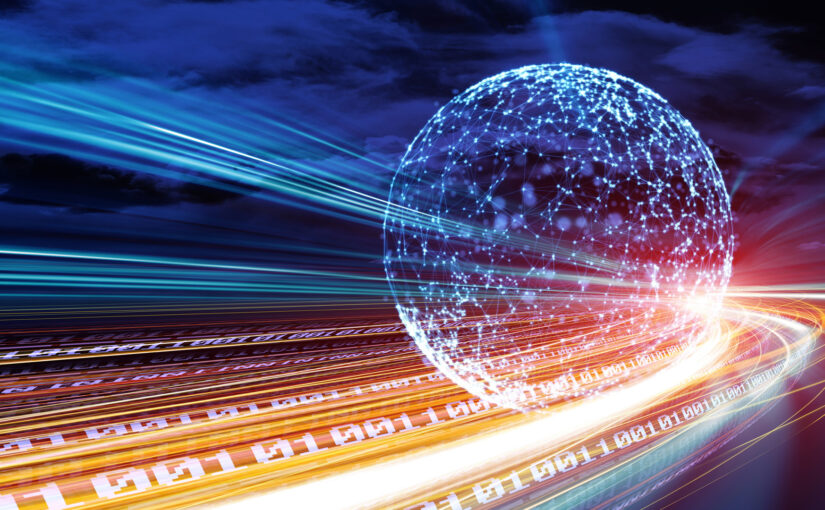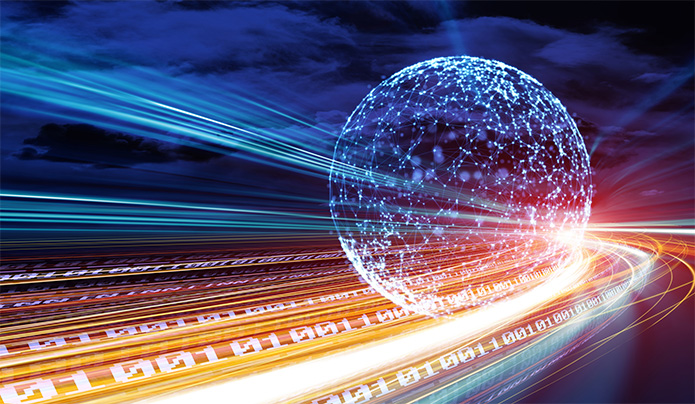Demand Growth Offers Opportunities for Data Centers


Artificial intelligence is accelerating data center growth and energy needs—and facilities can reduce costs and earn revenue by managing their electricity wisely.
Grid planners have nearly doubled their 5-year load growth forecasts on the back of surging data-center demand. In fact, data centers may account for as much as one-third of the anticipated increase in U.S. electricity demand from 2024 through 2026.
With generative AI driving much of the demand growth and more uses of the technology expected, grid operators will reward data centers for investing in energy efficiency and keeping the grid balanced. Data centers that manage their energy efficiently could benefit as a result.
Data Centers Drive Demand
With data center growth forecast to exceed $150 billion through 2028, grid planners now expect total electricity demand to increase by 4.7% nationwide over the next five years—almost twice as much as the 2.6% lift they previously projected, Grid Strategies found in analyzing utilities’ latest Form 714 filings with the Federal Energy Regulatory Commission (FERC). Data centers typically use 40% of their electricity for computing, another 40% for cooling and 20% for other IT equipment.
Generative AI fuels the data center boom and the associated increase in electricity demand. According to Boston Consulting Group (BCG):
-
- In 2022, data centers consumed 2.5% of the total electricity used in the United States (~130 TWh).
- Data centers’ portion will triple to 7.5% (~390 TWh) by 2030.
- That’s as much electricity as 40 million U.S. houses would use—or almost a third of the nation’s total homes.
GenAI is expected to account for at least 1% of this increased power usage, mainly because of the electricity-intensive training needed for large GenAI models and the greater electricity needed to service the increasing volume of GenAI queries, BCG noted.
The International Energy Agency (IEA) projects that data centers’ total electricity consumption could almost double from 460 terawatt-hours (TWh) worldwide in 2022 to 1,000 TWh in 2026. That would approximate the electricity consumption of Japan, and developing a large country’s worth of generation, transmission and distribution capacity would be impractical.
Grid Operators Pressed to Keep Pace
Data center growth has brought challenges for grid operators. For example, grid operator PJM has warned that “unprecedented data center load growth” in certain areas of its service footprint could cause “all remnant capacity on the transmission system” to be used.
Northern Virginia is the epicenter for PJM’s regional challenges as well as data-center issues more broadly. Building on federal investments in fiber optics and industry incentives, Virginia has become the world’s largest data center market, with more than 35% (~150) of all known hyperscale data centers (more than 40MW of capacity) worldwide, according to the Virginia Economic Development Partnership.
Virginia’s data center market is growing so rapidly that the northern part of the state needs several large nuclear power plants worth of capacity to serve all the data centers in development. With growth intensifying and challenges mounting, data centers in Virginia, PJM and elsewhere must be flexible to meet emerging capacity constraints.

Challenges Create Opportunities
Improving energy efficiency and maximizing the value of distributed energy resources (DERs) is increasingly important to data centers and the grid operators in the markets they serve. For example, although hyperscale data centers, which are hosted by cloud services providers like Amazon, Google and Microsoft, keep using more electricity, they often offset demand increases by investing in energy-efficient equipment and improving supporting systems such as HVAC and lighting.
With large power usage, comes large potential savings through energy efficiency. Furthermore, data centers in PJM and the Midcontinent Independent System Operator, Inc. (MISO) market region may also qualify for energy efficiency incentives that reward facilities for permanently reducing demand. These incentives are available to facilities in data-center hubs such as Virginia, Chicago and Ohio.
In addition to reducing energy costs by improving efficiency, qualified data centers can earn revenue without interrupting operations. There is no risk or extra cost for qualifying for energy efficiency incentives either.
For example, CPower’s process of qualifying data centers for energy efficiency incentives is simple.
- Identify opportunity. Qualifying projects may include new construction, upgrades to energy-efficient servers or power usage effectiveness (PUE) improvements. (PUE compares the site’s overall load to its IT load. The ideal PUE number is 1.0 because it means that all electricity is consumed by IT equipment.)
- Confirm qualifications. Key criteria include having a project completion date since Jan. 1, 2022, available capacity rights and a location within supported PJM or MISO territories.
- Collect data. The last step before contracting includes gathering more than two years of data, including energy usage and PUE information, and completing an engineering review.
Given that energy efficiency opportunities evolve as the industry changes and power needs shift, working with a partner like CPower can help a data center capitalize on chances to save money and reap incentives as they emerge.
VPPs Maximize DER Value
Leveraging the flexibility of DERs like emergency generators, batteries and solar generation is also critical for data centers. The grid’s growing need for flexibility makes DERs increasingly valuable for grid services, thereby allowing data centers to make the most of their resources and maximize their value.
With excess generator capacity meant to keep facilities up and always running, data centers are optimally positioned to earn revenue by quickly curtailing loads in demand response programs. When properly automated, data centers can provide near real-time ancillary services that help keep the grid balanced as well.
Data centers also provide grid flexibility and drive the renewable energy transition by deploying grid-scale, carbon-free energy. Furthermore, as data centers look towards future growth, efficiency and sustainability, they can join virtual power plants (VPPs) to service their local communities and support the grid by optimizing DERs.
As AI accelerates data-center growth and electricity demand, data centers can reduce costs, earn revenue and help the grid by improving energy efficiency and maximizing the value of DERS.
Call us at 844-276-9371 or visit CPowerEnergy.com/contact to explore how you can monetize your data center’s energy efficiency and resources to earn revenue for helping the grid.
Nate Soles
As CPower’s Vice President of National Accounts, Nate manages dozens of data center clients and strategies across North America.


